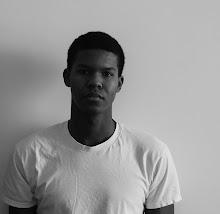“What does it matter, you’re not going to save them all,” the old man said.
“It matters to this one,” the boy replied as he threw a beached turtle into the water.
Even though one person will not save humanity, they do have the power to change at least one other life for the better. The significance of this story, shared by Dr. Becker, is that the world is not going to change in one great effort, but by the efforts of many who share this belief. Positive change, in whatever shape it takes, is waiting to happen all around us.
It is the job of the designer to investigate and embrace the challenge of correcting the strain we (developed countries) have put on other nations and that we (the collective population) have put on Earth. Without a constant desire to evolve, humanity may as well be non-existent.
I was fortunate enough to attend this weekend’s A Better World by Design conference and hear Cameron Sinclair, founder of Architecture for Humanity, share how he feels significant change comes about. He said that realistic change comes from groups that move step by step to solve a problem, and it is those who “think big and act small” who will lead those efforts. That same principle seems prevalent in every project presented this the weekend.
Should we do nothing because it might be wrong?
It is fair to say that learning from failed attempts is far better than never attempting. The knowledge gained from those trials can only push a designer to uncover more about a process, material, or culture.
Another collective principle presented during this conference is the need for proactive, not reactive, solutions. Due to many underlying factors, a portion of aid is reactive; chasing problems instead of creating systems to prevent them from occurring all together.
One example of a proactive design solution was presented by Iqbal Z. Quadir, founder of GrameenPhone. This cell phone network was established in Bangladesh in 1993. His philosophy of design continues to empower the poor citizens of this developing country through the use of technology. By setting up a strong system of communication, GrameenPhone dynamically changed both the culture and productivity of Bangladeshis. In this case, the design of a cell phone network sparked positive change. It may be impossible to say how many social or economic issues were avoided because of this endeavor.
One of the easiest ways to make a difference in the world as a (young) designer is to be informed of the challenges we face (on any scale), and to be consciously active in making a small difference. With that, it is also important to share your efforts (as small as they may be) to foster interest and appreciation for humanitarian design. It is the responsibility of the designer to contribute their knowledge and passion in creating a greater good.
Subscribe to:
Post Comments (Atom)

No comments:
Post a Comment